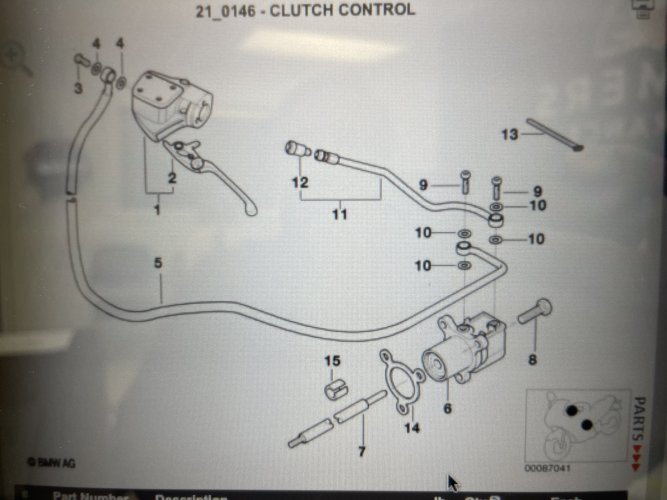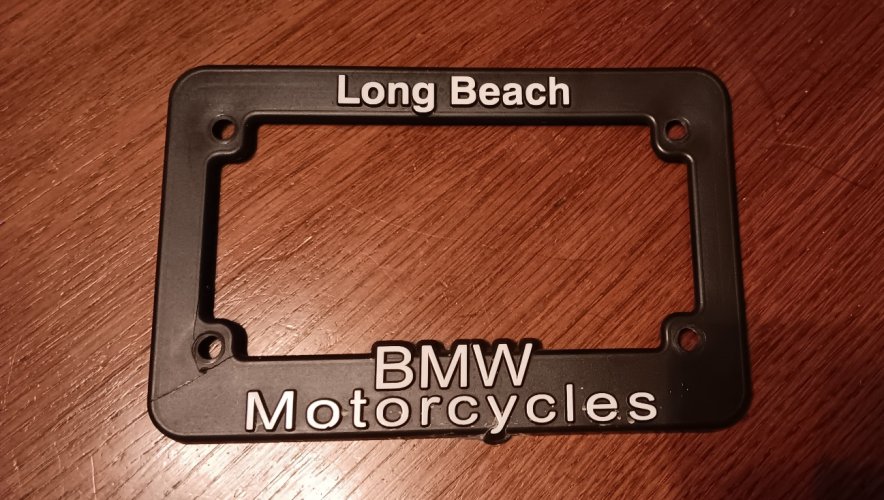tangoalpha
Active member
Well…well…well, it’s been quite a weekend for me and my beloved Der Beemer. Since I just got my bike titled/registered in Texas on Friday and it’s all cleaned up and looking spiffy, I had hoped that I would be able to enjoy a short ride over the weekend.
As I had mentioned in my prior post the bike has been sitting since moving to Texas a year ago, so I wanted to flush the old gas out. Fortunately, I did use a fuel stabilizer and I have have been going out to the garage every couple of weeks to start the bike and let it warm up until I get 1 or 2 bars on the RID display. The bike has sat while on a battery tender so the battery is still in good shape and start ups haven’t posed any problems. So, I took a ride down the street to fill up my tank with premium and that is when I observed (twice) while stopped that the bike didn’t shift from N to 1st when prompted with the clutch lever in. After releasing the clutch lever and reattempting, the bike then shifted from N to 1st gear. Upon returning to my garage, I checked the clutch fluid level by peering through the sight window. That’s when I observed that my “clutch fluid” (also known as DOT 4 Brake Fluid to the rest of the motorcycle riding public) was low.
This of course, led to a discussion here on the forum about why my fluid level dropped and the likely cause being a clutch slave cylinder that needs replacing ASAP. At this point, I ordered a Speed Bleeder to replace the factory grub screw since I’m obviously going to be flushing out the entire system when replacing that slave cylinder. So at this point, now with a full tank of gas and a slave cylinder replacement on my list, I decided I’ll just top off the fluid to the correct level and take a quick spin to see if there’s any difference when shifting from N to 1st. After riding about 20 miles, I noticed a new problem develop.
When riding, I noticed that as I was downshifting in to 3rd gear my RID Display showed E (6th gear). On the ‘02 RT, BMW decided to program the RID to show 6th gear as “E” for economy. As in fuel economy. Because….well, why not? They’re BMW after all and they just had to be different. As I continued to downshift, the RID registered 3rd gear as I clicked in to 1st gear. The green N light is illuminated correctly when in neutral, but it seems that 1st gear and 3rd gears are reading incorrectly on the RID display. So it appears that Der Beemer has learned a new trick! Lucky me. This happened for the rest of the ride home. Besides a faulty gear position indicator switch, I cannot think of anything else that would be causing this.
I decided to consult my service manual and check YouTube for a helpful video on replacing the gear position indicator switch and found a video posted by another Oilhead RT owner who demonstrated how to do exactly that. The video began with “After removing the swing arm……” -heavy sigh-
-heavy sigh-
So, it would appear that either way, l’m going to be removing that swingarm and disassembling half the bike to replace BOTH the clutch slave cylinder and gear position indicator switch. Desperately looking to turn a negative in to a positive, the only plus that I can see is that I discovered the faulty gear position switch now, so that I can replace it at the same time as the slave cylinder while the bike will be torn down.
Also, while I’m in there performing surgery, I might as well add lubing the final drive gear spline to that list. Is there anything else that you can think of that I should address from a preventative maintenance standpoint, since I’m going in to the bowels of Der Beemer?
- Clutch slave cylinder replacement
- Gear position indicator switch replacement
- Lubricate final drive spine
- ?
- ?
As I had mentioned in my prior post the bike has been sitting since moving to Texas a year ago, so I wanted to flush the old gas out. Fortunately, I did use a fuel stabilizer and I have have been going out to the garage every couple of weeks to start the bike and let it warm up until I get 1 or 2 bars on the RID display. The bike has sat while on a battery tender so the battery is still in good shape and start ups haven’t posed any problems. So, I took a ride down the street to fill up my tank with premium and that is when I observed (twice) while stopped that the bike didn’t shift from N to 1st when prompted with the clutch lever in. After releasing the clutch lever and reattempting, the bike then shifted from N to 1st gear. Upon returning to my garage, I checked the clutch fluid level by peering through the sight window. That’s when I observed that my “clutch fluid” (also known as DOT 4 Brake Fluid to the rest of the motorcycle riding public) was low.
This of course, led to a discussion here on the forum about why my fluid level dropped and the likely cause being a clutch slave cylinder that needs replacing ASAP. At this point, I ordered a Speed Bleeder to replace the factory grub screw since I’m obviously going to be flushing out the entire system when replacing that slave cylinder. So at this point, now with a full tank of gas and a slave cylinder replacement on my list, I decided I’ll just top off the fluid to the correct level and take a quick spin to see if there’s any difference when shifting from N to 1st. After riding about 20 miles, I noticed a new problem develop.
When riding, I noticed that as I was downshifting in to 3rd gear my RID Display showed E (6th gear). On the ‘02 RT, BMW decided to program the RID to show 6th gear as “E” for economy. As in fuel economy. Because….well, why not? They’re BMW after all and they just had to be different. As I continued to downshift, the RID registered 3rd gear as I clicked in to 1st gear. The green N light is illuminated correctly when in neutral, but it seems that 1st gear and 3rd gears are reading incorrectly on the RID display. So it appears that Der Beemer has learned a new trick! Lucky me. This happened for the rest of the ride home. Besides a faulty gear position indicator switch, I cannot think of anything else that would be causing this.
I decided to consult my service manual and check YouTube for a helpful video on replacing the gear position indicator switch and found a video posted by another Oilhead RT owner who demonstrated how to do exactly that. The video began with “After removing the swing arm……”
So, it would appear that either way, l’m going to be removing that swingarm and disassembling half the bike to replace BOTH the clutch slave cylinder and gear position indicator switch. Desperately looking to turn a negative in to a positive, the only plus that I can see is that I discovered the faulty gear position switch now, so that I can replace it at the same time as the slave cylinder while the bike will be torn down.
Also, while I’m in there performing surgery, I might as well add lubing the final drive gear spline to that list. Is there anything else that you can think of that I should address from a preventative maintenance standpoint, since I’m going in to the bowels of Der Beemer?
- Clutch slave cylinder replacement
- Gear position indicator switch replacement
- Lubricate final drive spine
- ?
- ?





